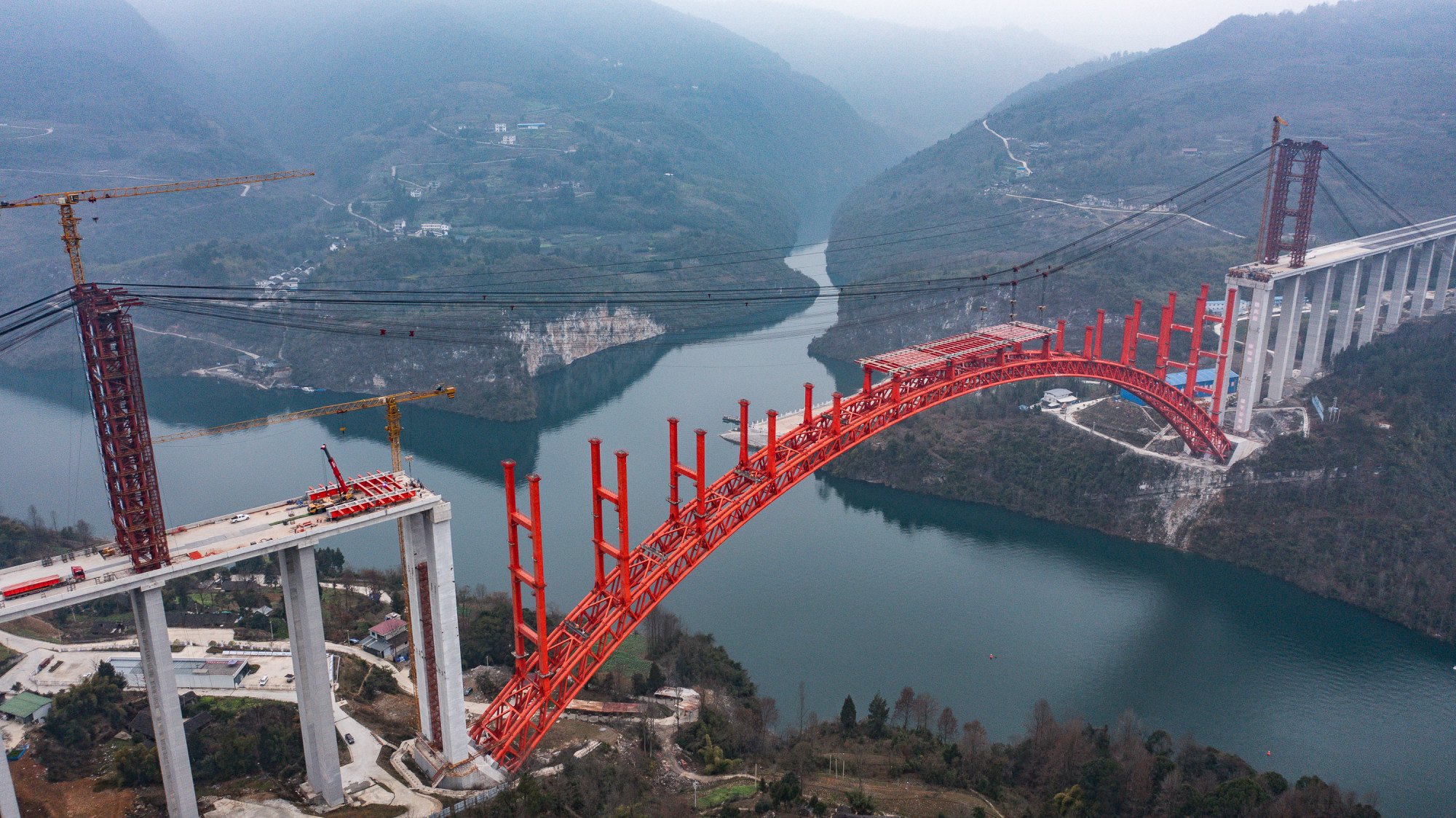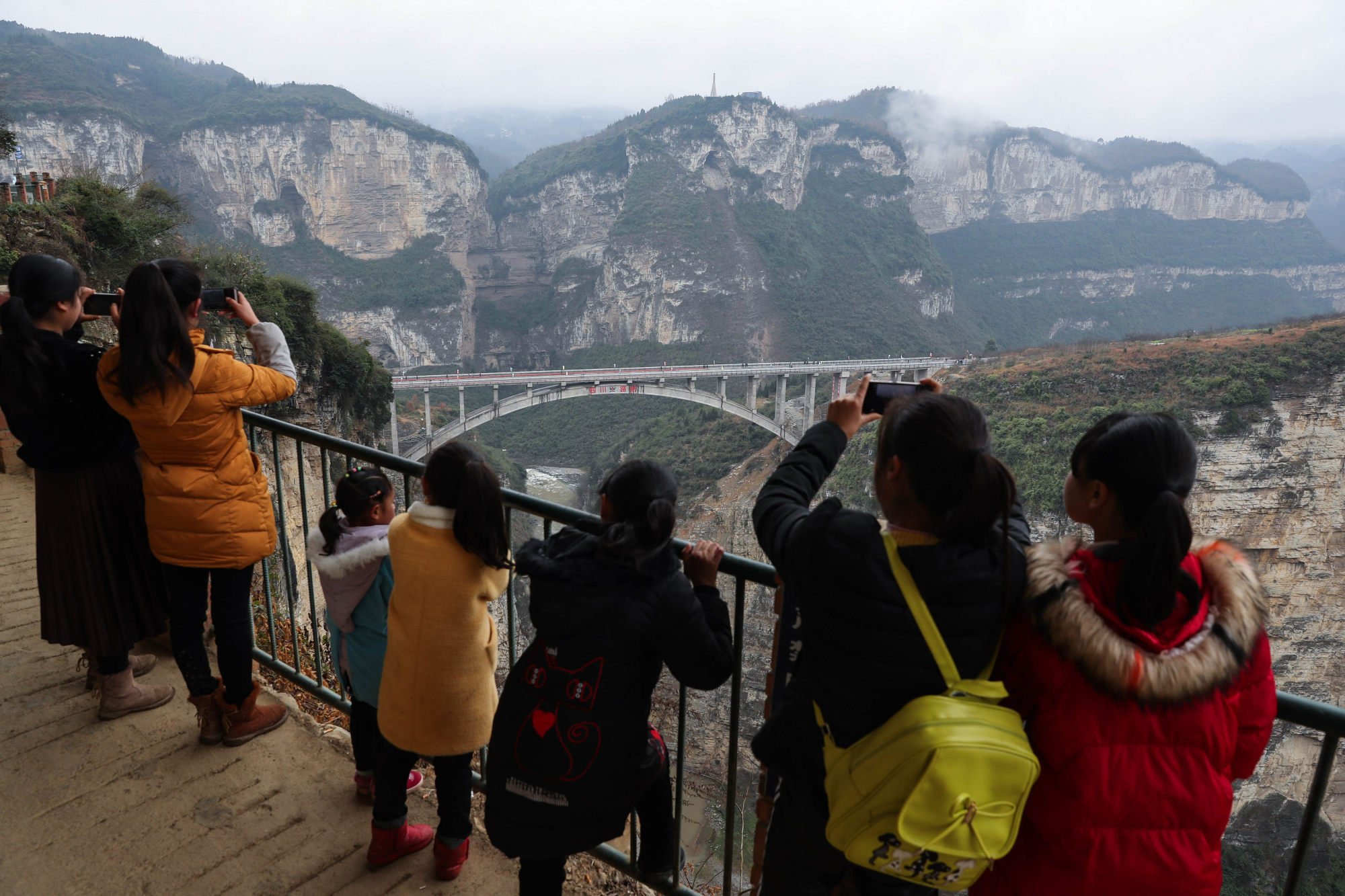
Guizhou offers Hong Kong lessons in building bridges and tackling poverty
- As Guizhou’s bridges boost trade, tourism and relationships, the province has also worked on inclusiveness, bringing 9 million out of poverty over the decade
- Super-connector Hong Kong should also build its bridges with the mainland and the world, between the government and people, making sure to leave no one behind
It boils down to making use of the area’s unique characteristics, building up inclusive economies and making the government more efficient and effective in responding to residents’ daily needs.
During our recent visit to Guizhou to promote mental health education, we were astounded by the transformation of a region once known for having “no flat land within three feet” into a crucial transport and geographic hub in southwestern China.
The pivotal component? Bridges. China’s long history of bridge construction is a testament to how such structures can improve urbanisation, economic development, productivity and even societal relationships.
Between 1979 and 2020, Guizhou’s highway network grew rapidly, fostering many new bridges. Of particular note is the impressive Balinghe Bridge, constructed in 2009. This suspension bridge not only marked breakthroughs in dimension and complexity, but also boosted Guizhou’s transport, trading and even sports activities – the bridge offers bungee jumping, parachuting, parasailing and other extreme activities.

Today, Guizhou has become known as a “bridge museum” of the world. It has more than 28,000 highway bridges, and is thought to have almost half of the world’s tallest 100 bridges, including four of the top 10. A total of 15 bridges in Guizhou have won 25 national and international awards. That these feats of engineering have received international accolades marks Guizhou’s place on the world map.
Interestingly, the functions of these bridges have also evolved. From being merely transport facilitators, they are now also catalysts for economic development, bringing in trade and tourism that is also encouraging environmental protection and ecological appreciation.
These improved transport links have decreased the area’s resource allocation disparities with the coastal regions and boosted Guizhou’s economic development – the province has become a top regional performer in terms of gross domestic product. Guizhou’s GDP for the first half of the year has already exceeded 1 trillion yuan (US$140 billion), dwarfing that of similarly poor regions like Tibet or Gansu.

The bridges double up as tourist magnets, providing unique opportunities for “bridge” tourism. The Balinghe Bridge, for instance, has attracted some 50,000 visitors since 2019, significantly boosting the local economy. This integration of bridge tourism, sports tourism and cultural tourism has also spurred business for local homestays, camping and local agricultural product sales, generating substantial revenues.
Committed to inclusive growth, Guizhou has launched poverty alleviation projects for those who might not have benefited from its economic transformation, lifting 9.23 million out of poverty over the past decade.
If Guizhou continues to deepen reforms and create a favourable development environment, it could leverage its transport improvements to attract more resources, manpower and funds.
With its low cost of living, stunning landscapes and attractive summer climate, Guizhou offers lessons for Hong Kong and other regions in how to drive economic development while not overlooking the vulnerable, resonating with the UN sustainable development goal to “leave no one behind”.
How Hong Kong can lean into its super-connector role
Our universities have been doing well in research and knowledge exchange. We also need to reconnect people in the community, even those with different views, so that people have opportunities and feel confident about the future.
The government’s ability to implement these policies is critical for our success. Guizhou offers an excellent example of the transformation that can be achieved by building bridges. Likewise, in Hong Kong, we can rebuild ourselves by building bridges.
Yunyu Xiao is an assistant professor of population health sciences at Weill Cornell Medical College
Paul Yip is an associate dean (knowledge exchange and development) in the Faculty of Social Sciences at the University of Hong Kong



